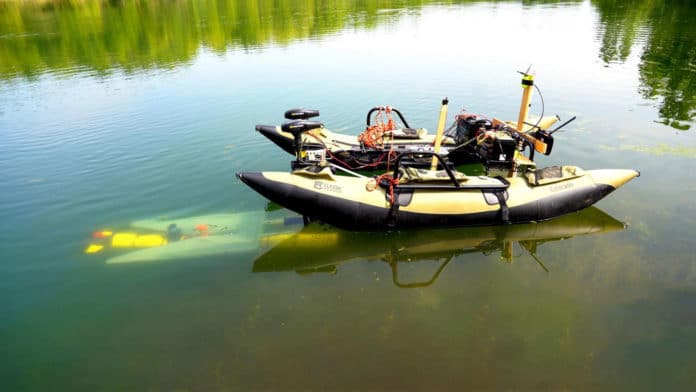In recent years, various types of robots have been able to find their place in environmental studies and search-and-rescue missions. But as the robots are battery-powered, they must eventually return to their workstation to recharge and upload the data they collected during the operation. This can be a problem if your robot is an autonomous underwater vehicle (AUV), exploring the depths of the oceans. For such robots, returning to the base to charge is not an easy task.
So, scientists have come up with a similar solution used for the flying drones: mobile charging stations that could greatly extend their range. Although the aquatic environment has different challenges, the team found inspiration in a modern vacuum cleaner.
Nina Mahmoudian, associate professor of mechanical engineering at Purdue, has created a mobile docking system for marine robots to dock autonomously. The proposed docking system is a small, collapsible design that is integrated within the large submarine and fits within the launch vehicle requirements. It enables AUVs to recharge and upload their data, and then go back out to continue exploring, without the need for human intervention.
“An autonomous vacuum, like a Roomba, does its vacuum cleaning, and when it runs out of battery, it autonomously returns to its dock to get recharged,” said Nina Mahmoudian. “That’s exactly what we are doing here, but the environment is much more challenging.“
When a marine robot is submerged in water, it loses its ability to transmit and receive radio signals, including GPS data. Some may use acoustic communication, but this method can be difficult and unreliable, especially over long distances. Because of this, underwater robots currently have a limited range of action.
It also means that they usually follow a pre-programmed path and return to the surface when their battery runs low. There, people usually take them over, recharging their batteries, and recovering data.
The new solution in the form of a mobile and fully autonomous docking station is reduced to an algorithm that changes the robot’s route in real-time, which allows it to dock on the surface for recharging or data transfer. According to the researchers, the portable nature of the dock allows it to be used in all sorts of scenarios. One of the more ingenious examples is when it is sent on missions to explore other planets, such as Saturn’s moon Titan, which contains lakes that scientists would like to explore one day.
The team has already tested the system on a short mission in Lake Superior. “What’s key is that the docking station is portable,” Mahmoudian said. “It can be deployed in a stationary location, but it can also be deployed on autonomous surface vehicles or even on other autonomous underwater vehicles. And it’s designed to be platform-agnostic, so it can be utilized with any AUV. The hardware and software work hand-in-hand.“
“This system can be used anywhere,” she said. “Robots on land, air, or sea will be able to operate indefinitely. Search-and-rescue robots will be able to explore much wider areas. They will go into the Arctic and explore the effects of climate change. They will even go into space.”
